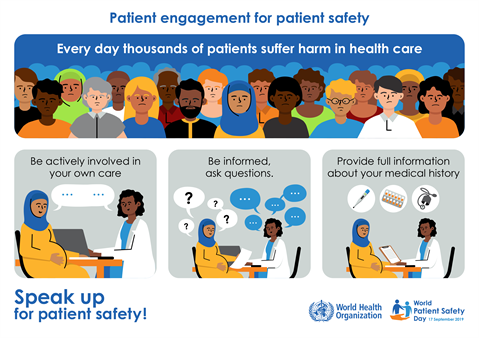Today is the first year of World Patient Safety Day, launched by the World Health Organisation to create awareness of patient safety and urge people to show their commitment to making healthcare safer.
Safety is a core concern for PHIN, and forms a significant part of the information we collect from hospitals, with the first safety measures – infections – due to be launched on our website at the beginning of next month.
Here, our Communications and External Affairs Manager, Jonny Evans, tells how PHIN is promoting the patient safety agenda from a data perspective, and asks what role we might all have – from hospital staff to patients – in ensuring that data is an effective instrument in standing up for patient safety.
‘First, do no harm’ is the most fundamental doctrine in medicine, and with good reason. It is sewn into every aspect of care provision – from guiding consultants’ treatment recommendations to our expectation as patients when receiving care. Aside from the most serious of cases, most of us expect to leave hospital in better health than we went in.
Data, while not being the most exciting area for many, plays a vital role in monitoring safety and understanding when and why things can sometimes go wrong. It is a means of understanding what happened in the past and what can be learned and improved to prevent further harm in future.
While organisations like Public Health England and NHS Digital have put in place robust systems for monitoring patient safety through evidence and data collection in NHS funded care, the same cannot historically be said for privately funded healthcare in the UK. This is where PHIN steps in; to provide a more comprehensive sense of safety for privately funded healthcare.
While our primary purpose is to present this information back to patients in a meaningful way to help inform their choice of healthcare providers, we also understand the broader value of the data we hold.
We estimate that around 95% of patients that access private healthcare in the UK are eligible for NHS treatment, and indeed most will rely on the NHS for their treatment for most of their healthcare needs throughout their life. There is now a greater consistency in how the quality and safety in patient care is monitored, regardless of where they receive their treatment.
We will continue to advocate for more comprehensive quality and safety reporting, particularly within private sector. However, ‘data’ isn’t just something that happens ‘out there’. We all have a role in ensuring that there is clear, accurate and complete data available to help doctors and medical professionals to help improve the quality and safety of health services.
Hospitals must continue to support patient safety by ensuring that they collect as complete and robust data as possible and submit it the relevant bodies, including PHIN. Equally, consultants have an important role in making sure that their practice data is accurate and complete. With over 800,000 episodes of care reported every year in private healthcare alone, it is inevitable that there will be some errors.

But perhaps most important is us – patients. Whatever our position inside or outside healthcare, we are all also patients and we all have a role in advocating for better information about the services we use, and ensuring the data on our healthcare can be collected and used to help improve services and protect others in the future. In this new age of GDPR it can be tempting to jump off the grid. I for one don’t appreciate internet companies monitoring my every move.
The information that’s collected about me through social media, my search history and smartphone is used to build a profile of my likes and dislikes. It will tell you the music and sports I like, about my family situation, and can even tell you how I get to work. This all feel a bit ‘big brotherly’, and ultimately, it’s all geared towards one thing – selling me more stuff.
But healthcare is inherently different. Healthcare data helps us build a profile of a hospital, disease or even procedure. It helps us understand how regularly a procedure was successful for a certain type of patient, or situations where incidents have been more prevalent. These are all events that can be understood and learned from to protect future patients. While a level of data will always be collected to assist in your care, the more we can add to its depth and richness, the greater chance there is of improving safety for everyone.
I always encourage my friends and family to agree for their data to be used in research. At PHIN we collect a wide range of data which details patient’s experience of the care they receive, from patient feedback to health assessment questionnaires (often referred to as PROMs). These add vital depth and flavour to our experience of healthcare, answering the question – did not only nothing go wrong, but did my health improve?
By simply filling in the feedback and questionnaires – as honestly and completely as possible, we are playing an important role in standing up for patient safety. Data is power, and the more power we can give doctors and medical professionals, the more we can expect in return.
